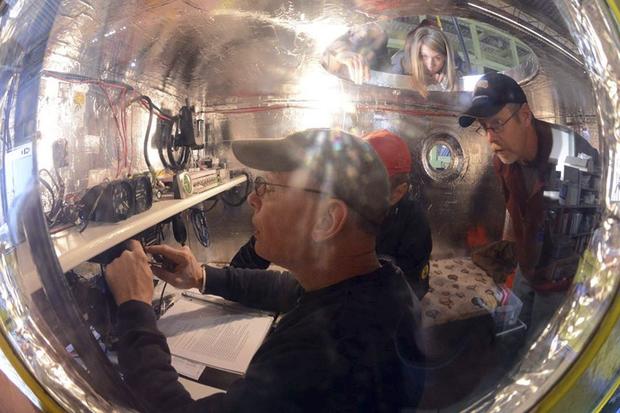Balloon crew hits unexpected "wall" in bid to break world record
ALBUQUERQUE, N.M. -- The pilots of a helium balloon attempting a record-breaking flight across the Pacific Ocean were aiming for Canada, but now the weather has forced them to make a sweeping right turn toward Mexico.
The Two Eagles pilots Troy Bradley of Albuquerque and Leonid Tiukhtyaev of Russia are trying to break two world records, for distance and duration.
They set off from Saga, Japan, shortly before 6:30 a.m. Sunday Japan time, and were aiming for Canada until a high-pressure ridge formed off the U.S. West Coast as they approached North America.
"Think of it as hitting a wall: It will have to go left or right," their mission control said in a statement.
The northerly course would have taken them over the Canadian Rockies to somewhere in the northern U.S., possibly Montana or North Dakota.
Instead, they're headed south, to a Saturday landing in Mexico, possibly on the peninsula of Baja California, mission control said.
Baja California had been ruled out earlier because of bad weather there, but conditions shifted and "the balloon should have good weather coming into the Mexican coast," mission control said.
In a video posted on Twitter, Bradley said the pilots were having a "wonderful time" during the flight:
No one has crossed the Pacific Ocean in a gas balloon since 1981. But to break the distance record, the balloonists need exceed the current records by 1 percent to claim a new world record. That means they need to travel 5,260 miles to break the mark.
Another important record is the duration of the flight, set in 1978 when Ben Abruzzo, Maxie Anderson and Larry Newman made the first trans-Atlantic balloon flight. That record of 137 hours in the air in a traditional gas balloon is considered the "holy grail" of ballooning achievements.
The balloon is outfitted with an array of monitors and other instruments that are tracking its course. After they land, the data will be forwarded to the keeper of such records, the Federation Aeronautique Internationale, for consideration.
The balloon's speed has slowed significantly, which is something forecasters had expected. The balloon, made up of a massive envelope and a specially-designed carbon fiber-composite capsule, is capable of staying aloft for as many as 10 days.
The team says the very last task will be a safe landing. With no certainty about their destination, their team established a network of balloonists across the U.S. and in southern Canada to serve as chase crews, traveling as much as 200 miles to help tether the capsule and round up the balloon's envelope as it deflates.
But not even the pilots know where they will land. It depends on the winds encountered along the way.
And if those winds blow them beyond the Baja peninsula, it wasn't immediately clear if they'll be able to land in a place where a team on the ground can help them.
